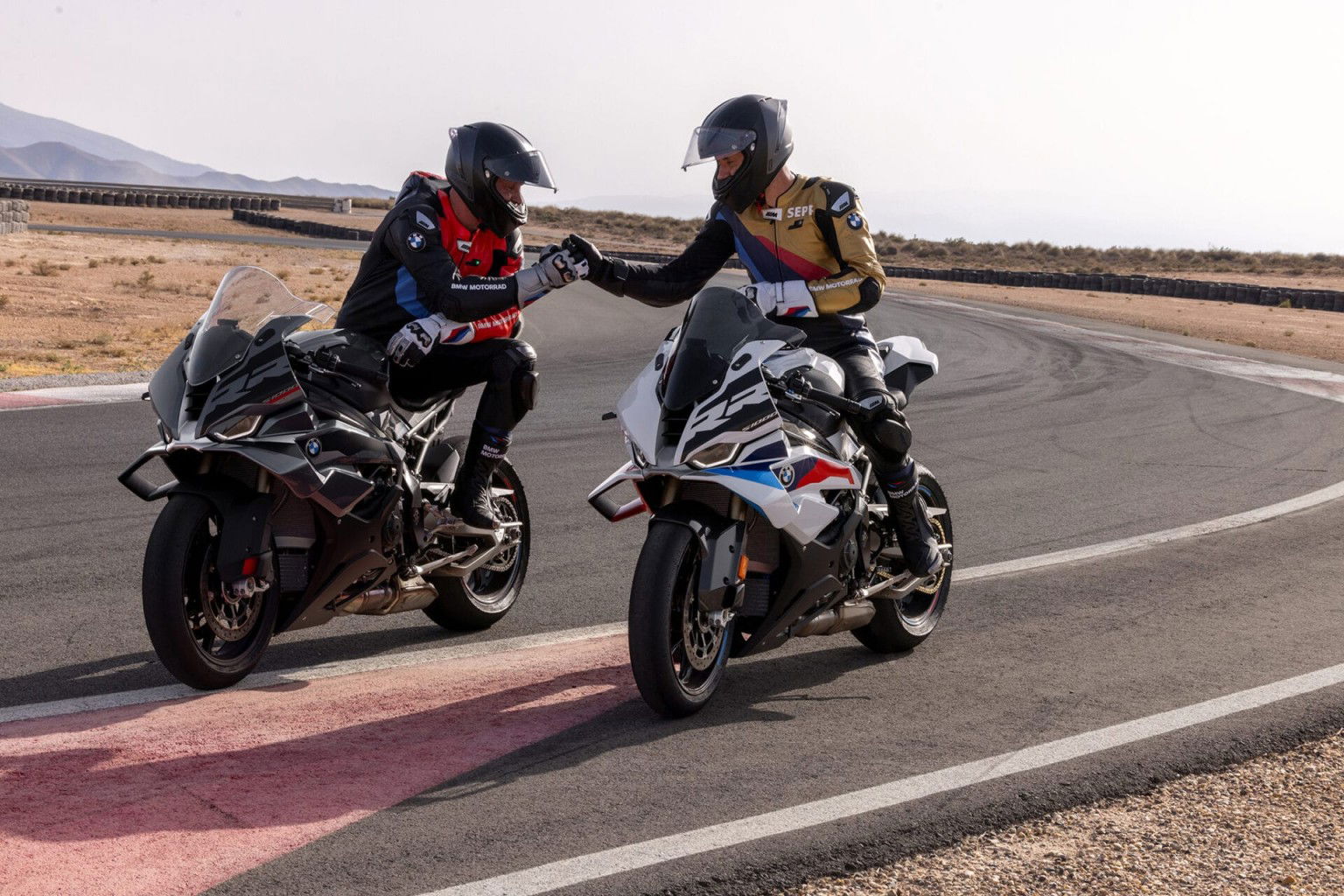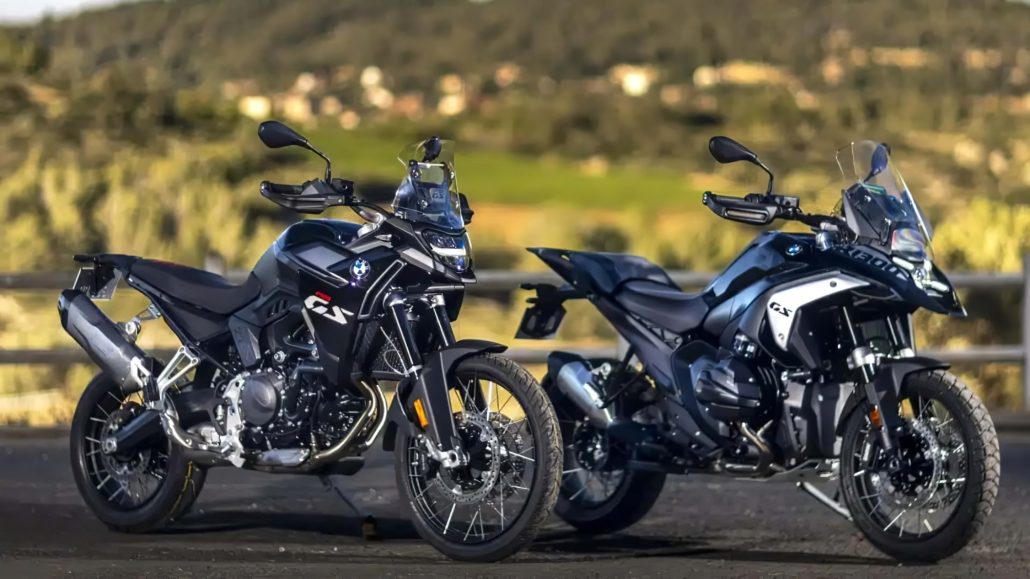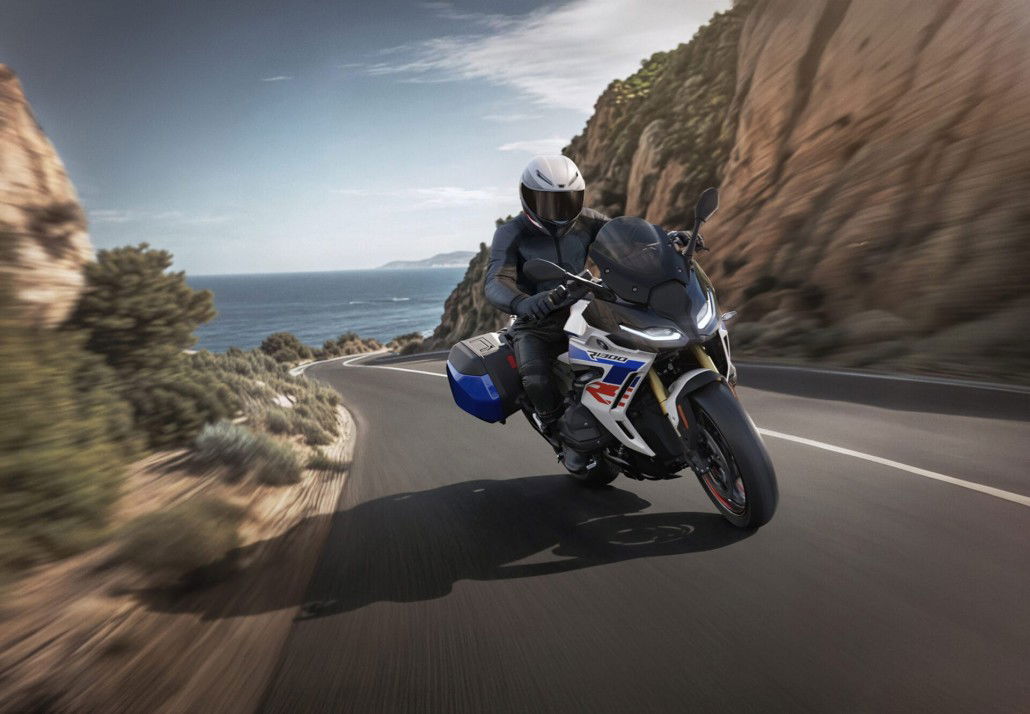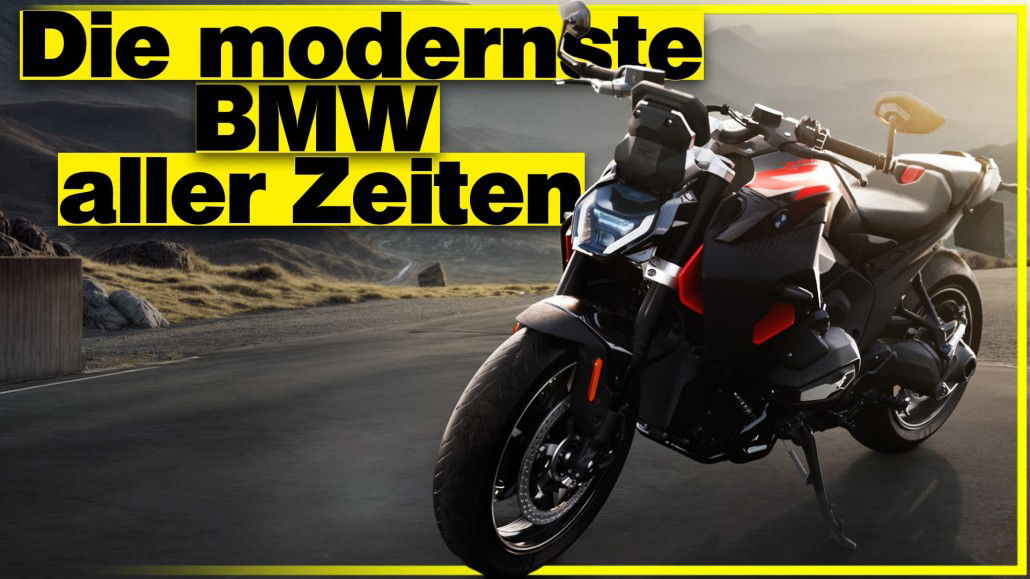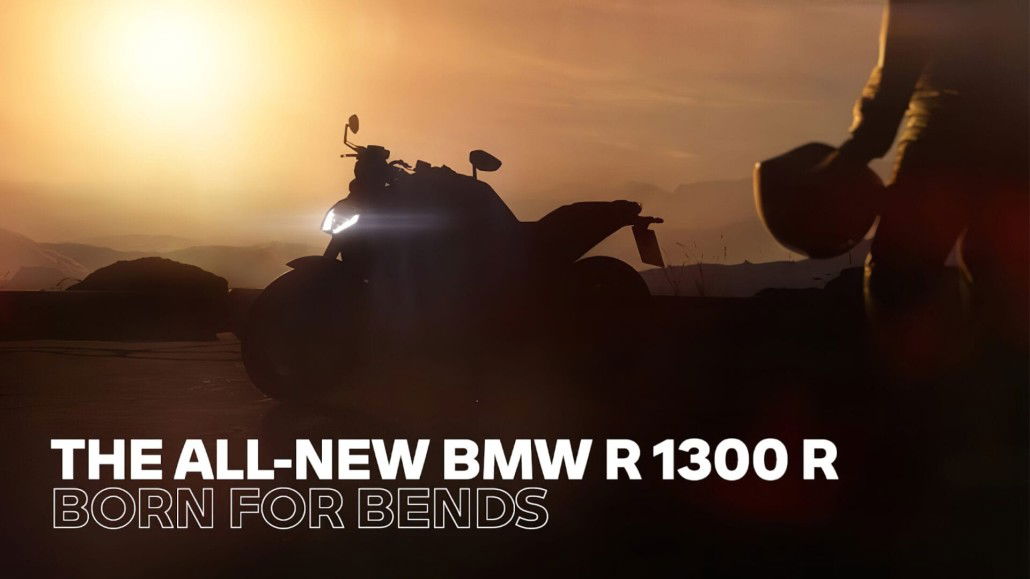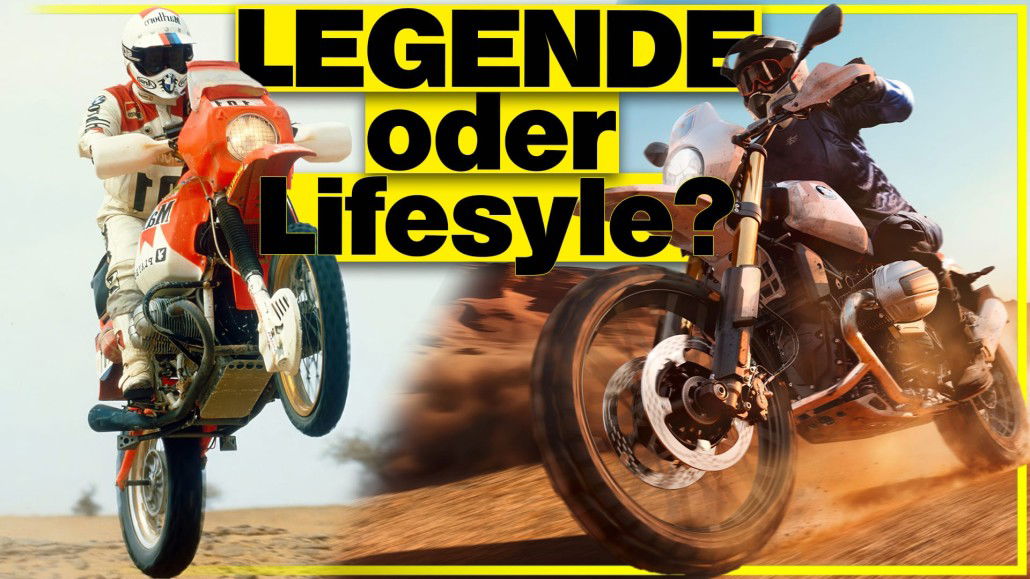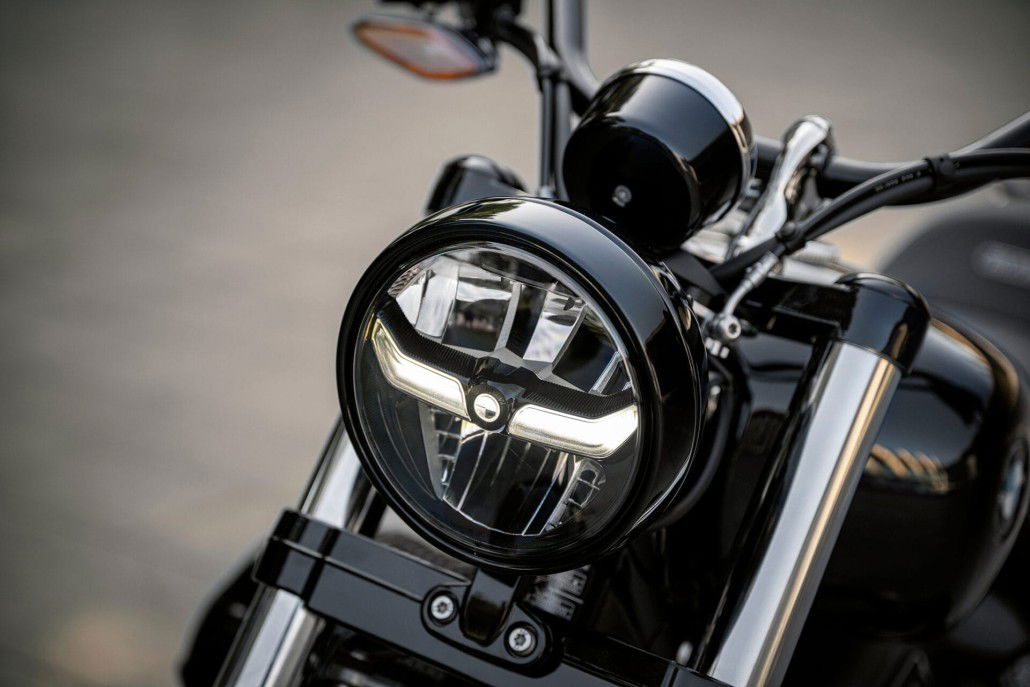BMW M 1000 RR: More power and improved aerodynamics for maximum lap times
The BMW M 1000 RR is presented as the more powerful of the two models and is designed specifically for demanding racers who want to get the most out of the machine. Significant technical modifications to the engine and frame as well as the revised aerodynamics package are at the heart of the new features.
More powerful engine
The new M 1000 RR has been given a significant power increase of 4 kW (6 hp), which means it now delivers 160 kW (218 hp) at 14,500 rpm. In combination with a torque of 113 Nm at 11,000 rpm, the in-line four-cylinder engine offers enough potential for use on the race track. The maximum speed remains at 15,100 rpm. This increased performance was made possible by a series of technical modifications such as redesigned titanium valves, an increased compression ratio of 14.5:1 and enlarged intake and exhaust ports. The diameter of the throttle valves has been increased from 48 mm to 52 mm, increasing the passage area by 17%.
Improved aerodynamics with new winglets
The aerodynamics of the M 1000 RR have also been optimized. The newly designed winglets, made of carbon (CFRP), ensure increased downforce at high speeds, which provides more stability, especially when cornering and leaning. The aerodynamic downforce at 300 km/h has been increased from 22.6 to 30 kg without affecting the top speed of 314 km/h. The fairing and windscreen at the front have also been adapted to minimize drag.
Short-stroke throttle grip for precise acceleration
Another highlight of the M 1000 RR is the new M short-stroke throttle grip. The angle of rotation has been reduced from 72 degrees to 58 degrees, which should make it easier to control acceleration precisely without having to turn the wrist too much, especially on the racetrack.
New rider assistance systems for better handling
The M 1000 RR comes with Dynamic Traction Control (DTC) as standard, which now integrates the Slide Control and Brake Slide Assist functions. The steering angle sensor continuously measures the drift angle at the rear wheel and adjusts the traction control accordingly in order to better control powerslides. Brake Slide Assist supports the rider when braking in corners and controls the brake pressure on the rear wheel, which in combination with the engine drag torque control is intended to ensure a high level of stability.
BMW S 1000 RR: Lighter and adapted version for the race track
Compared to the M 1000 RR, the S 1000 RR is somewhat more restrained with an output of 154 kW (210 hp) at 13,750 rpm. This model primarily appeals to riders who are looking for a balanced mix of racetrack and road capability.
Performance data and technical structure
The S 1000 RR is also equipped with an in-line four-cylinder engine, but the compression ratio is 13.3:1, which gives it slightly different characteristics compared to the M 1000 RR. It delivers a maximum torque of 113 Nm at 11,000 rpm and reaches a top speed of over 300 km/h. Technical changes here also include enlarged intake and exhaust ducts as well as an optimized exhaust system that meets the requirements of the Euro 5+ emissions standard.
Aerodynamic modifications and winglets
As with the M 1000 RR, aerodynamics also play a major role in the S 1000 RR. The winglets have been redesigned and generate 23.1 kg of downforce at 300 km/h, which should improve stability at high speeds. The S 1000 RR also has integrated brake ducts, which cool the brakes in a targeted manner and thus enable constant braking performance even under load.
Riding modes and electronics package
The S 1000 RR is equipped with the “Rain”, “Road”, “Dynamic” and “Race” riding modes as standard, while the “Race Pro” modes are available on the M 1000 RR as extended customization options for the racetrack. In addition, the S 1000 RR offers Dynamic Brake Assist (DBC), which prevents unintentional throttle applications when braking, which promises greater stability, especially during emergency braking on the racetrack.
Differences between the two models
The BMW M 1000 RR and the S 1000 RR differ primarily in terms of their target group and area of use:
- engine power: With 218 hp (160 kW) at 14,500 rpm, the M 1000 RR offers more power than the S 1000 RR with 210 hp (154 kW) at 13,750 rpm. This makes the M 1000 RR the more powerful choice for pure racetrack use.
- aerodynamics: Both models have winglets, but the M 1000 RR generates more downforce at 300 km/h and is therefore particularly suitable for high cornering speeds. However, the S 1000 RR offers additional functions such as the Brake Ducts for targeted brake cooling.
- assistance systems and riding modes: While the M 1000 RR has the advanced DTC system with Slide Control and Brake Slide Assist, the S 1000 RR is equipped with the regular DTC systems and the riding modes for the road and the racetrack. The M 1000 RR offers extended Race Pro options for individual tuning.
- design and color variants: The M 1000 RR is offered in Lightwhite uni and Blackstorm metallic as M Competition. The S 1000 RR is available in the colors Blackstorm metallic, Bluestone metallic and in Lightwhite uni / M Motorsport.
With these two new models, BMW Motorrad is addressing different needs and riding styles. While the M 1000 RR was developed uncompromisingly for the race track, the S 1000 RR offers a slightly adapted version that is also of interest to ambitious hobby riders.
BMW M 1000 RR – Technical Data and Features
- Power: 218 PS / 215 hp / 160 kW at 14,500 rpm
- Torque: 113 Nm at 11,000 rpm
- Top Speed: 314 km/h (195 mph)
- Engine Capacity: 999 cc
- Compression Ratio: 14.5:1
- Engine: Liquid-cooled inline-four, DOHC, variable intake camshaft timing (BMW ShiftCam)
- Valves per Cylinder: 4, Titanium
- Throttle Body Diameter: 52 mm
- Exhaust System: Titanium, optimized internal pipe routing in pre-silencer
- Frame: Aluminum bridge frame, engine as a load-bearing element
- Front Suspension: 45 mm Upside-Down telescopic fork, adjustable preload, rebound, and compression
- Rear Suspension: Aluminum dual swingarm with central spring strut, adjustable preload, rebound, and compression
- Suspension Travel (Front/Rear): 120 mm / 118 mm
- Wheelbase: 1,458 mm
- Steering Head Angle: 66°
- Brakes (Front): M dual disc brakes, Ø 320 mm, radial four-piston fixed calipers
- Brakes (Rear): Single disc brake, Ø 220 mm, two-piston floating caliper
- Wheels: M Carbon wheels
- Tires (Front/Rear): 120/70 ZR17 / 200/55 ZR17
- Weight (fully fueled): 194 kg (428 lbs)
- Fuel Tank Capacity: 16.5 l
- Electronics: Dynamic Traction Control (DTC) with Slide Control, Brake Slide Assist, ABS Pro, six ride modes including “Race Pro”, new M Short-throw throttle grip (58° rotation angle)
- Aerodynamics: Carbon winglets, downforce at 300 km/h (186 mph): 30 kg
- Colors: Lightwhite uni, Blackstorm metallic (M Competition)
BMW S 1000 RR – Technical Data and Features
- Power: 210 PS / 207 hp / 154 kW at 13,750 rpm
- Torque: 113 Nm at 11,000 rpm
- Top Speed: over 300 km/h (186 mph)
- Engine Capacity: 999 cc
- Compression Ratio: 13.3:1
- Engine: Liquid-cooled inline-four, DOHC, variable intake camshaft timing (BMW ShiftCam)
- Valves per Cylinder: 4, Titanium
- Throttle Body Diameter: 48 mm
- Exhaust System: Euro 5+ compliant
- Frame: Aluminum bridge frame, engine as a load-bearing element
- Front Suspension: 45 mm Upside-Down telescopic fork, adjustable preload, rebound, and compression
- Rear Suspension: Aluminum dual swingarm with central spring strut, adjustable preload, rebound, and compression
- Suspension Travel (Front/Rear): 120 mm / 117 mm
- Wheelbase: 1,456 mm
- Steering Head Angle: 66.2°
- Brakes (Front): Dual disc brakes, Ø 320 mm, radial four-piston fixed calipers
- Brakes (Rear): Single disc brake, Ø 220 mm, single-piston floating caliper
- Wheels: Aluminum cast wheels, optional M Carbon wheels
- Tires (Front/Rear): 120/70 ZR17 / 190/55 ZR17
- Weight (fully fueled): 198 kg (436 lbs), with M package: 193.5 kg (427 lbs)
- Fuel Tank Capacity: 16.5 l
- Electronics: Dynamic Traction Control (DTC) with four ride modes (Rain, Road, Dynamic, Race), ABS Pro, Dynamic Brake Control (DBC), Hill Start Control Pro
- Aerodynamics: New winglets, downforce at 300 km/h (186 mph): 23.1 kg, integrated brake ducts for cooling
- Colors: Blackstorm metallic, Bluestone metallic, Lightwhite uni / M Motorsport (with M package)
[amazon bestseller=”BMW S 1000 RR” items=”3″]



